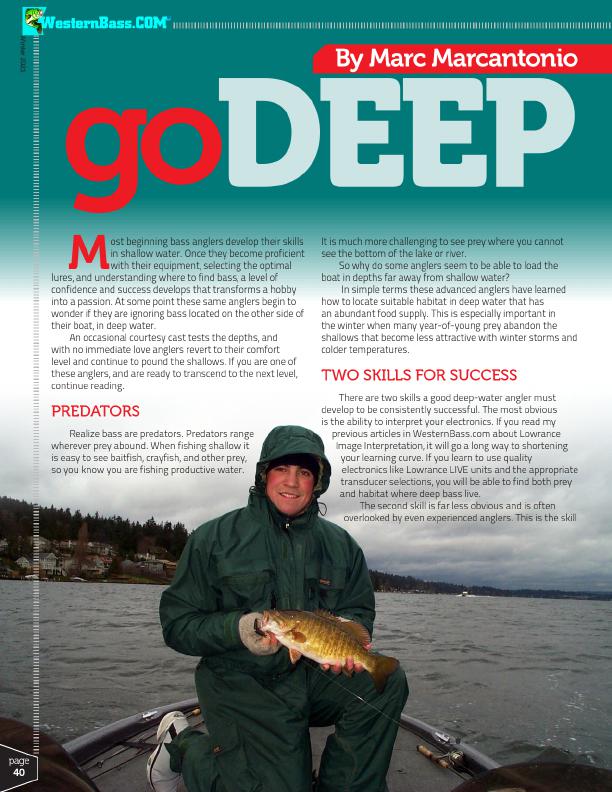
®
®
D g E o EP
By Marc Marcantonio
Winter 2021
M
ost beginning bass anglers develop their skills
in shallow water. Once they become proficient
with their equipment, selecting the optimal lures, and understanding where to find bass, a level of
confidence and success develops that transforms a hobby
into a passion. At some point these same anglers begin to
wonder if they are ignoring bass located on the other side of
their boat, in deep water.
An occasional courtesy cast tests the depths, and
with no immediate love anglers revert to their comfort
level and continue to pound the shallows. If you are one of
these anglers, and are ready to transcend to the next level,
continue reading.
PREDATORS
Realize bass are predators. Predators range wherever prey abound. When fishing shallow it is easy to see baitfish, crayfish, and other prey, so you know you are fishing productive water.
It is much more challenging to see prey where you cannot see the bottom of the lake or river.
So why do some anglers seem to be able to load the boat in depths far away from shallow water?
In simple terms these advanced anglers have learned how to locate suitable habitat in deep water that has an abundant food supply. This is especially important in the winter when many year-of-young prey abandon the shallows that become less attractive with winter storms and colder temperatures.
TWO SKILLS FOR SUCCESS
There are two skills a good deep-water angler must develop to be consistently successful. The most obvious is the ability to interpret your electronics. If you read my
previous articles in WesternBass.com about Lowrance
Image Interpretation, it will go a long way to shortening
your learning curve. If you learn to use quality
electronics like Lowrance LIVE units and the appropriate
transducer selections, you will be able to find both prey
and habitat where deep bass live.
The second skill is far less obvious and is often
overlooked by even experienced anglers. This is the skill
page 40